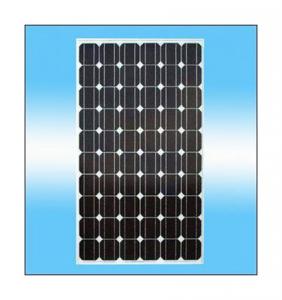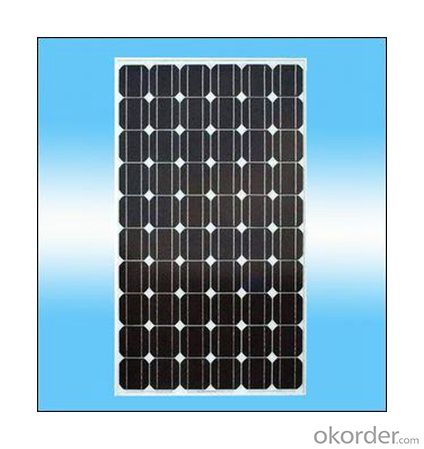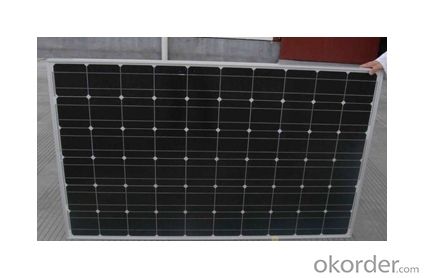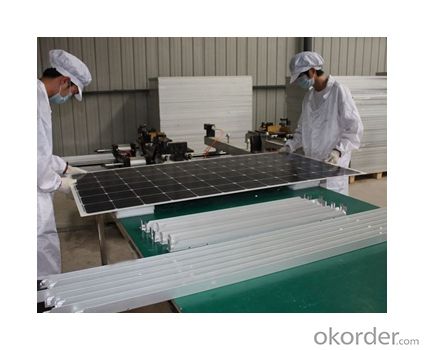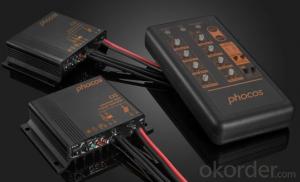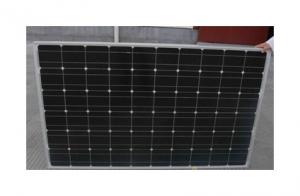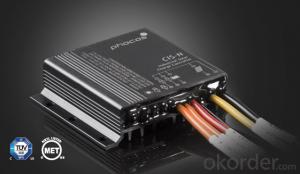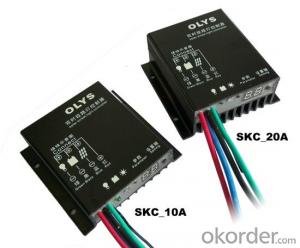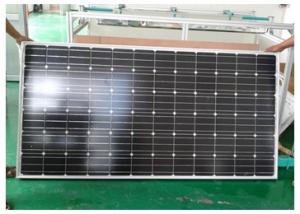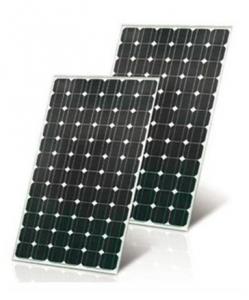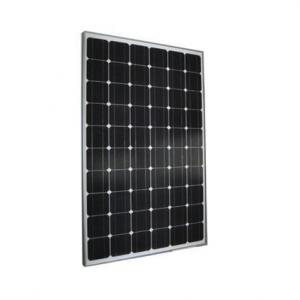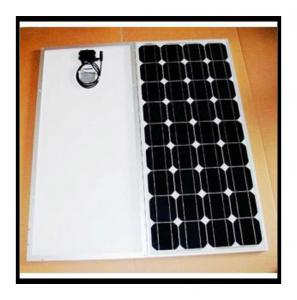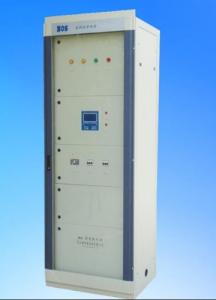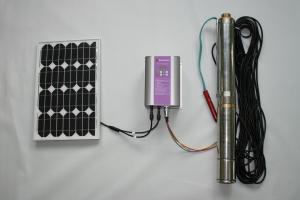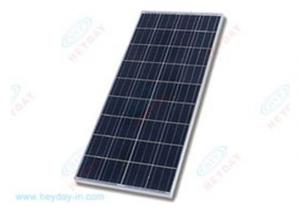Solar Controllers Wholesale:Mono-Crystalline 125*125 255W Solar Modules
OKorder Service Pledge
OKorder Financial Service
You Might Also Like
A solar panel, or photovoltaic PV module, is a device that is composed of solar cells and which, when struck by photons of light from the sun, generates an electrical current which can then be used to power DC or AC electrical loads.
We are one of the well known manufacturers and suppliers of an extensive range of solar module. Entire range of our products is well checked before offering to the clients to ensure that our products are free from any defect. Our products are delivered within the stipulated time frame. These solar module are available for outdoor applications. Our solar module are designed as per the set industry standards and can be bought at market leading Available with us in various dimensions, these modules are stringently tested under define parameters before the final dispatch by our professional who hold rich industry experience in this domain.
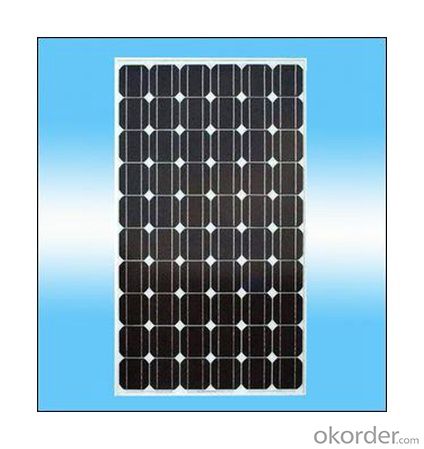
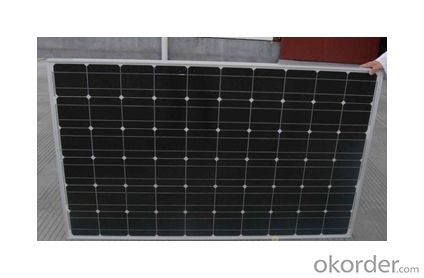
Electrical Characteristics
Max-pow (W) | 255 |
Max-Power Voltage (V) | 51.5 |
Max-Power Current (A) | 4.96 |
Open-Circuit Voltage (V) | 62.3 |
Short-Circuit Current (A) | 5.45 |
Mechanical Characteristics
Cable type, Diameter and Length | 4mm2, TUV certified, 1000mm |
Type of Connector | Compatible with MC4 plug |
Arrangement of cells | 6*12 |
Cell Size | 156*156 |
Dimension | 1580*1069*45 |
Weight | 20.5Kg |
Glass, Type and Thickness | High Transmission, Low Iron, Tempered Glass 3.2mm |
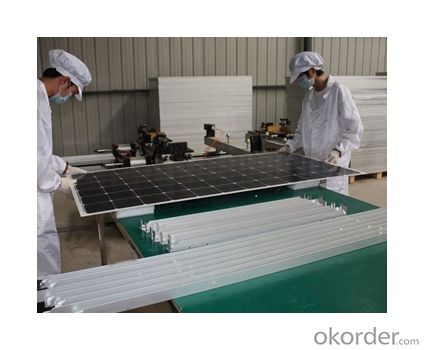
Features
Guaranteed positive tolerance 0/+5w ensures power output reliability
Strong aluminum frames module can bear snow loads up to 5400Pa and wind loads up to 2400Pa.
Excellent performance under low light environments (mornings evenings and cloudy days)
12 years for product defects in materials and workmanship and 25 years for 80% of warranted minimum power.
Certifications and standards: IEC 61215.
Manufactured according to International Quality and Environment Management System (ISO9001, ISO14100).
FAQ
Q: When do I need a charge controller and why?
The safest way to figure out if you need a charge controller is to take Battery Amp Hour Capacity and divide this by the Solar Panel max. power amp rating. If the quotient is above 200, you don't need a controller. If the number is less than 200 than you need a controller.
For example if you have a 100 amp hour battery and a 10 watt panel, you take 100 and divide it by .6 (600mA) and you get 166.6. Since this is less than 200 you need a charge controller. If you have a five-watt panel in the above example you take 100 divided by .3 (300mA) and you come up with 333.3. Since this is larger than 200 you do not need a charge controller. However you still need a blocking diode, to prevent the battery from discharging to the panel at night. So as a general rule of thumb you don't need a charge controller unless you have more than five watts of solar for every 100-amp hours of battery capacity.
Q: What is PV & how does it work?
PV stands for photovoltaic. Photo = Light and Voltaic = Electricity. A solar cell converts light to electricity.
A solar cell is made of silicon. Computer chips are made of this same material. Basically, when light strikes the surface of a solar cell some of it is absorbed into the silicon. This light energy bumps the electrons loose and causes energy to flow.
By packaging approximately 36 solar cells together a solar panel or a solar module is created. When you have more then one solar panels you create a solar array.
- Q: Can a solar controller be connected to multiple solar panels?
- Yes, a solar controller can be connected to multiple solar panels. A solar controller is designed to regulate the charging process of solar batteries, and it can handle the combined power output from multiple solar panels by connecting them in parallel or series configurations.
- Q: What is the installation process for a solar controller?
- The installation process for a solar controller typically involves a few simple steps. Firstly, you need to mount the controller in a suitable location near the solar panels and battery bank. The controller should be placed where it is easily accessible for monitoring and maintenance. Next, you will need to connect the solar panels to the controller. This usually involves connecting the positive and negative wires from the solar panels to the corresponding terminals on the controller. After that, you will need to connect the battery bank to the controller. Similar to the solar panel connection, you will need to connect the positive and negative wires from the battery bank to the appropriate terminals on the controller. Finally, you will need to connect any additional components, such as inverters or load terminals, to the controller if required. It is crucial to follow the manufacturer's instructions and safety guidelines during the installation process. It is also recommended to consult with a professional or an electrician if you are unsure or unfamiliar with electrical installations.
- Q: Can a solar controller be used with a solar-powered food processing facility?
- Yes, a solar controller can be used with a solar-powered food processing facility. A solar controller is essential in managing and optimizing the power generated by solar panels. It regulates the flow of electricity, protects batteries from overcharging or discharging, and ensures efficient energy utilization. In a solar-powered food processing facility, a solar controller would help maintain a stable and reliable power supply, enabling smooth operations and reducing reliance on non-renewable energy sources.
- Q: What is the maximum current capacity of a solar controller?
- The maximum current capacity of a solar controller can vary depending on its specifications and model. However, in general, solar controllers are available in a range of current capacities, typically ranging from 10 amps to 60 amps or even higher for larger systems.
- Q: Is it necessary to use a solar controller with a small solar panel system?
- Yes, it is necessary to use a solar controller with a small solar panel system. A solar controller helps regulate the charging and discharging of the batteries in the system, preventing overcharging and prolonging battery life. It also ensures optimal power output and protects the system from potential damage due to voltage fluctuations. Therefore, using a solar controller is recommended to maximize the efficiency and longevity of a small solar panel system.
- Q: What is the maximum number of communication protocols supported by a solar controller?
- The maximum number of communication protocols supported by a solar controller can vary depending on the specific model and manufacturer. Some solar controllers may support only one or a few communication protocols, while others may be compatible with multiple protocols such as RS485, Modbus, CAN, or Ethernet. It is important to check the specifications of a particular solar controller to determine the maximum number of supported communication protocols.
- Q: How do you protect a solar controller from theft?
- One possible answer could be: There are a few measures you can take to protect a solar controller from theft. Firstly, you can install the controller in a secure location, such as inside a locked cabinet or a secure room. Additionally, you can consider using tamper-proof screws or bolts to secure the controller in place. Another option is to use security cameras or motion sensors to deter potential thieves. Lastly, marking the controller with unique identification numbers or engraving your contact information can make it less attractive for theft and increase the chances of recovery if stolen.
- Q: What is the maximum voltage input for a solar controller?
- The maximum voltage input for a solar controller varies depending on the specific model and manufacturer. However, in general, a typical solar controller can handle voltages ranging from 12V to 48V. It is important to check the specifications provided by the manufacturer to ensure the solar controller is compatible with the specific voltage of the solar panels being used.
- Q: How does a solar controller prevent batteries from discharging at night?
- A solar controller prevents batteries from discharging at night by monitoring the energy flow and regulating the charging and discharging process. It acts as a bridge between the solar panels and the batteries, ensuring that the energy generated by the panels is effectively stored in the batteries during the day and preventing any reverse current flow during nighttime.
- Q: What is the role of a solar controller in preventing electrical surges in the solar panel system?
- The role of a solar controller in preventing electrical surges in the solar panel system is to regulate and control the flow of electricity between the solar panels and the batteries or the grid. It ensures that the voltage and current levels are kept within safe limits, preventing any sudden spikes or surges that may damage the system components. The solar controller also provides protection against overcharging or over-discharging of batteries, safeguarding the overall system from potential electrical surges.
Send your message to us
Solar Controllers Wholesale:Mono-Crystalline 125*125 255W Solar Modules
OKorder Service Pledge
OKorder Financial Service
Similar products
Hot products
Hot Searches
Related keywords
